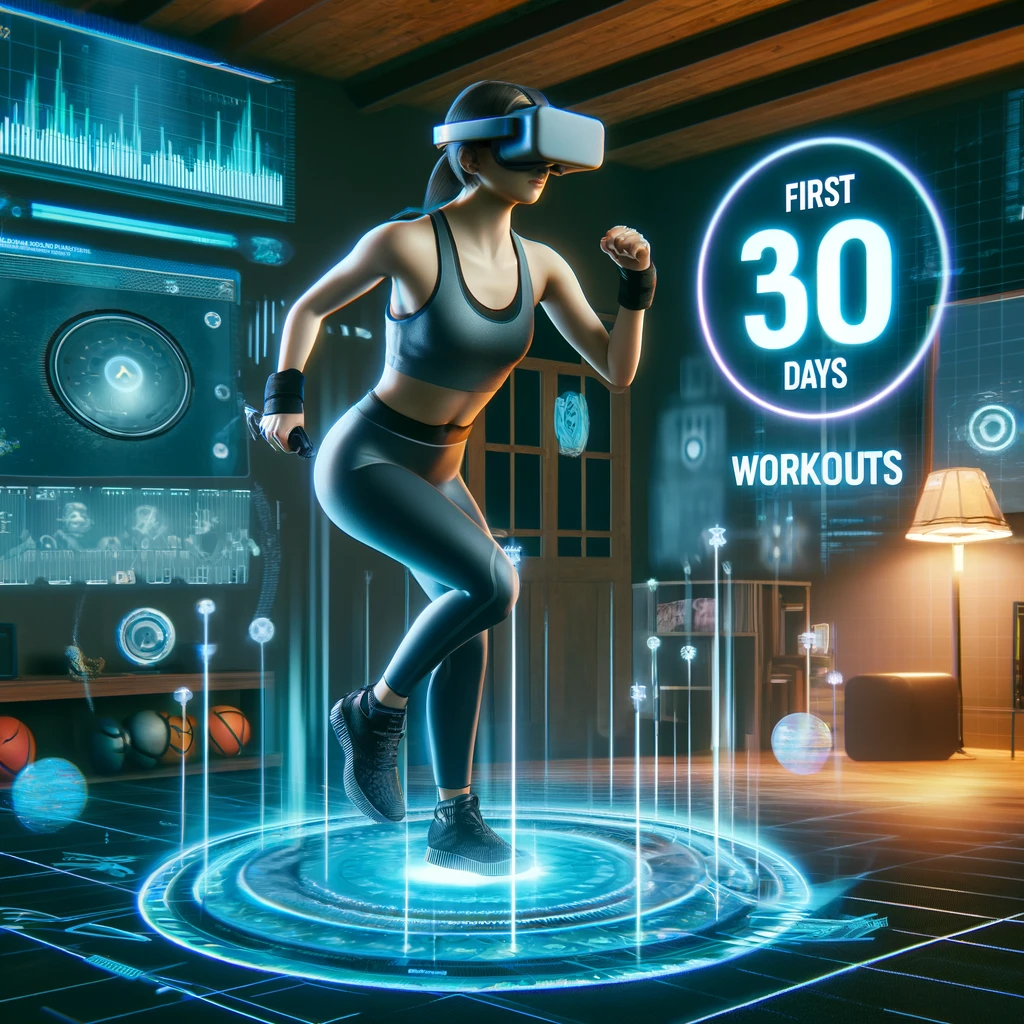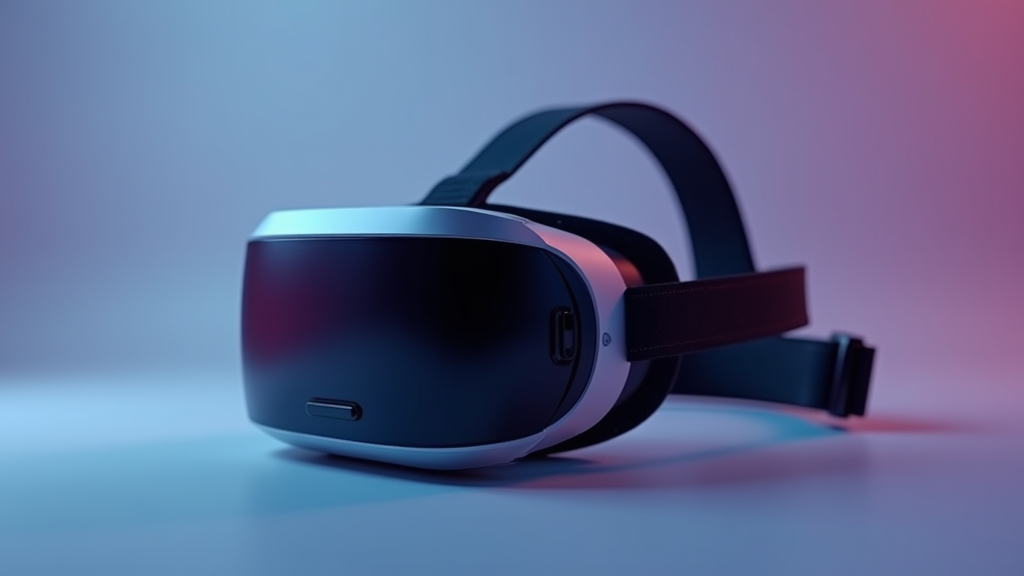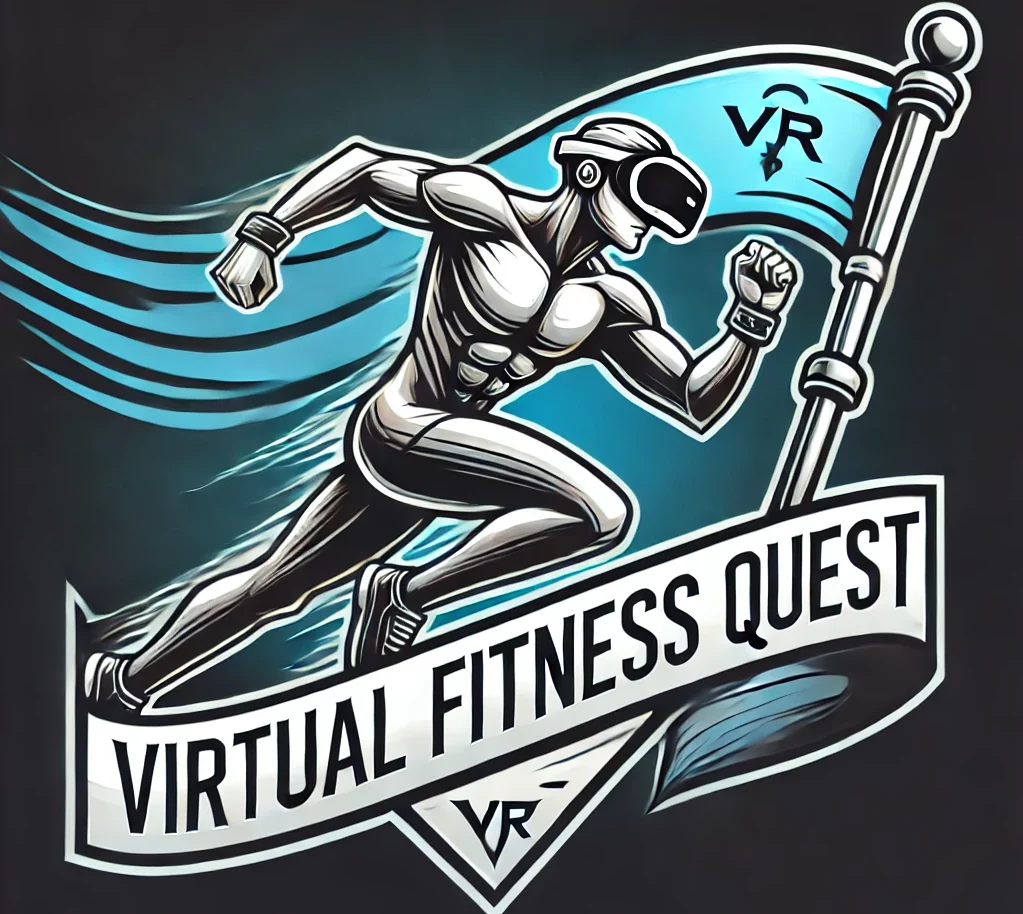
What To Expect In Your First 30 Days Of VR Workouts
Last Updated on: 17th February 2025, 06:28 pm
This article contains affiliate links, meaning I may earn a commission if you click through and make a purchase. As an Amazon Associate, I earn from qualifying purchases. This comes at no additional cost to you. I only recommend products or services that I believe will provide value to my readers, based on personal experience or thorough research.
I began my adventure with VR workouts a few months back and my first 30 days were full of exciting discoveries and valuable lessons. Virtual reality exercise provides a totally new way to break a sweat and challenge myself in a digital space that feels both fun and engaging. Here I will share what I experienced in my first month, with plenty of practical tips to help anyone else starting out in VR fitness.

Exploring the World of VR Workouts
When I first set up my VR system, I was both curious and a bit hesitant about how effective and immersive it could be. VR workouts combine physical activity with a visually stimulating environment. In those early days, even just adjusting to the setup and calibration felt like a real achievement. Many systems have different modes, and understanding the instructions provided by the manufacturer helped me ease into using the equipment safely.
The immersive nature of virtual reality meant that my workout space felt entirely transformed. Instead of a plain room, I found myself in digitally crafted worlds that made exercising feel more like an adventure rather than a routine. My early sessions blended light cardio with simple movement games to build my confidence. This initial period allowed me to adjust to the new kind of exercise and its unique mix of virtual elements and physical exertion.
Getting Acquainted With VR Fitness Equipment
Before I could jump into a deep workout routine, I took time to learn about the equipment involved. VR fitness requires a headset, hand controllers, and sometimes additional sensors to track movements. Many systems also offer a built-in tracking feature that monitors your physical movements accurately. Becoming comfortable with these devices is a very important first step.
The headset was the centerpiece of the system. I spent considerable time adjusting the straps and making sure the lenses were positioned correctly, as a clear picture is highly important. I also found that checking out the settings helped me understand the available customizations, such as adjusting the brightness or the field of view for a tailored experience.
Understanding the different accessories made my initial workout much more enjoyable. The hand controllers responded well to my gestures, a feature that I grew to appreciate since it directly influenced how interactive my exercise sessions were. This phase was all about testing the limits of my equipment and ensuring that everything was calibrated for a smooth experience.
Initiating Your VR Workout Adventure
As I progressed, I learned that a well-planned routine is a great way to maximize the benefits of VR workouts. Here is a quick guide based on my experiences during the first 30 days:
- Set Up and Calibrate: Ensure your headset and controllers are set up correctly. This includes adjusting the fit and calibrating the tracking system to suit your environment.
- Start With Light Exercise: Begin with low-intensity activities such as virtual walking or simple cardio games. This helps your body adjust to a new form of movement gradually.
- Explore Different Programs: Try out various apps and workout programs. Many platforms offer a range of activities from boxing simulations to rhythmic dance routines.
- Monitor Discomfort: I paid close attention to any signs of motion sickness or fatigue, taking breaks if things felt overwhelming to maintain a healthy exercise routine.
- Establish a Routine: Consistency is key. I set aside regular time each day for my VR workouts, which helped build a habit and ensured steady progress.
This approach allowed me to balance safety with an innovative workout experience. The gradual build-up helped me adjust to the immersive nature of VR while keeping physical exertion under control.
Common Hurdles and Early Challenges
The first month came with several challenges that proved both manageable and very instructive. Here are some issues that might arise during your initial VR workout sessions:
- Disorientation and Motion Sickness: Not every session was comfortable. I experienced moments of disorientation, especially when the intensity of the virtual movements exceeded my natural motions. This was managed by reducing the intensity and taking frequent brief pauses.
- Device Setup and Calibration: It took some time to install the equipment correctly. Learning how to adjust the headset for my comfort and positioning the tracking sensors was a process of trial and error.
- Adjusting to Virtual Environments: The immersive worlds sometimes felt overwhelming. I gradually learned to focus on the workout rather than getting lost amid the eye-catching digital scenery, which was a key learning point during the early days.
- Physical Adaptation: My muscles and joints were accustomed to standard gym exercises. The different types of movements required in VR workouts meant my body had to learn an entirely new range of motions, often leading to temporary stiffness and fatigue.
Disorientation and Motion Sickness
During several early sessions, I experienced mild motion sickness. I found that taking frequent short breaks and reducing the intensity of the digital movements greatly improved my comfort levels. Adjusting the settings to allow a slower pace gave my eyes and body time to adapt to the digital environment.
Device Setup and Calibration
The initial technical challenges were overcome by reading user guidelines and watching instructional videos suggested by the system provider. Spending extra time on these steps early on helped me avoid disruptions during more intense sessions later.
Adjusting to Virtual Environments
I quickly learned the importance of maintaining focus on the intended exercise rather than getting sidetracked by the scenic digital backgrounds. Many platforms now offer options to minimize distractions during workouts, which helped realign the focus to exercise rather than exploratory digital adventures.
Physical Adaptation
Adapting to new movements initially caused some muscle fatigue. I made sure to stretch before and after workouts. By listening to my body and gradually increasing the duration and intensity of my routines, I built up muscle endurance safely and effectively.
These challenges are common for beginners and, with some careful adjustments, can easily be overcome. Recognizing and adapting to these early hurdles helped me maintain a consistent routine and eventually progress to more demanding sessions.
Advanced Tips to Step Up Your VR Workout Experience
Once I had grasped the basics, I looked for ways to get more out of each session. Here are some advanced tips I found extremely helpful:
Optimize Your Settings: Experiment with game settings and environment configurations. Adjusting the field of view and graphics quality can reduce discomfort while ensuring a smooth experience. Custom settings help match the digital experience to your personal comfort levels.
Integrate Strength and Cardio: Use programs that offer a blend of strength training and cardio exercises. Many VR apps allow you to change resistance or difficulty levels in real-time. This combination provides a balanced approach, helping build both endurance and muscle strength.
Create a Dedicated Workout Space: Clearing space in your room or living area enhances safety. I rearranged my workout zone to minimize obstacles and distractions, ensuring my full focus was on the exercise and the virtual environment.
Track Your Progress: Many VR workout platforms provide useful data on calories burned, time active, and other critical metrics. I regularly reviewed these stats to note improvements and adjust my training plan accordingly, which helped me identify the apps that offered the most engaging and effective sessions.
Experiment With Interactive Features: Some platforms offer multiplayer experiences or real-time competitions. Although I started with single-player modes, I eventually tested interactive features that motivated me with friendly challenges. This competitive edge boosted my confidence and made workouts more enjoyable.
These tips allowed me to fine-tune my routine. With plenty of time and experience, I was able to adjust the workouts to more closely align with my fitness goals while enjoying a uniquely innovative method of exercise.
The Basics: What Equipment Should You Have?
Equipment quality plays a very important role in achieving a smooth VR workout experience. I made sure to invest in a reliable headset and quality hand controllers. The gear I used was not only comfortable but also featured technology that minimized lag and provided real-time responsiveness.
When choosing equipment, I prioritized the following factors:
- High-Resolution Display: A clear display makes an enormous difference in the overall immersion. A high-quality screen reduces eye strain and offers a truly captivating visual experience.
- Responsive Controllers: Precision in movement is key. Good controllers can pick up subtle gestures and movements, which boosts the overall effectiveness of your workout.
- Easy Setup: A system that is easy to install means you can spend more time exercising and less time troubleshooting technical issues.
- Comfortable Fit: The headset should remain comfortable during extended use. I tested various models to ensure that mine did not strain my neck or overheat during prolonged sessions.
Having the right equipment made it easier to concentrate on the workout itself. Quality gear not only enhances the immersive experience but also helps maintain motivation by reducing early frustrations.
Frequently Asked Questions
Below are some questions I encountered during my early days with VR workouts along with practical answers that helped me move forward:
Question: How much time should I spend on VR workouts each day?
Answer: I started with 15 to 20 minutes per session, gradually increasing the duration as my body adapted and I grew more comfortable with the technology. It is advisable to listen to your body and extend sessions only as you feel ready.
Question: What if I feel disoriented during a session?
Answer: If disorientation or mild motion sickness sets in, I found that taking short breaks and reducing the intensity worked wonders. Adjusting the pace to a slower setting can help ease the discomfort almost immediately.
Question: Can VR workouts replace traditional gym exercises?
Answer: In my experience, VR workouts serve as a great complement to traditional exercise routines. They offer an engaging and innovative way to stay active, though a balanced regimen that mixes both VR and conventional exercises seems to yield the best overall fitness results.
Additional Reflections on VR Fitness and Its Impact on Daily Life
Beyond simply burning calories, VR workouts have had a profound effect on my overall well-being. The regular sessions not only strengthened my body but also provided a mindful escape from daily stress. Immersing myself in these virtual worlds allowed me to focus on the present moment, easing the pressures of everyday life. As I spent more time in my dedicated workout zone, I realized that the digital settings did more than just entertain me—they inspired me to maintain a positive outlook and refocus my energy. The interactive nature of VR also means that no two sessions are ever quite the same, keeping boredom at bay and instilling a sense of anticipation for the next dive into new digital challenges.
Another notable benefit was the boost in my mental clarity and stress management. The physical activity, combined with engaging visuals and dynamic challenges, created an environment where both my mind and body could reset. In moments when life felt overwhelming, logging into a VR session provided a mini retreat—a space to unwind, regroup, and come out feeling more balanced. This shift from conventional exercise also helped me question and redefine my personal fitness goals, as I started to appreciate the blend of technology and physical activity as a holistic approach to health.
Moreover, establishing a VR workout routine nurtured discipline and time management. Over time, the structured sessions became a much-anticipated part of my daily schedule, reinforcing the importance of regular physical activity. This consistency not only improved my stamina and muscle endurance but also cultivated a mindset geared towards continuous self-improvement. I began to notice positive changes in my energy levels, concentration, and even creativity—benefits that extended well beyond the workout space.
Every session reinforced the idea that fitness isn’t just about going through the motions; it’s about discovering new personal limits and celebrating small victories. The challenges I faced early on eventually evolved into stepping stones that led me to this truly next stage of digital fitness. The process of figuring out which settings worked best, adapting to unique digital environments, and learning to listen to my body became an essential part of the overall experience. This all-in-one approach to exercise has significantly reshaped not only my physical capabilities but also my approach to everyday challenges.
Closing Thoughts
My first 30 days of VR workouts taught me that starting something new may feel challenging at first, but it quickly becomes rewarding once adjustments are made. The next stage of technology in fitness presents an exciting opportunity to reimagine exercise routines while having fun. Digital environments and interactive applications add a fresh spin to the way I work out.
Every day brought a new experience. I learned that thorough preparation is key. Ensuring a safe setup, establishing a consistent routine, and tracking progress have all contributed to more enjoyable and effective workouts. Over time, integrating technology with exercise provided a sense of novelty and continuously pushed my limits.
VR workouts may begin with some hurdles, but with careful adjustments and regular practice, they evolve into an engaging way to exercise. I encourage anyone curious about this innovative form of training to try it out, take things slowly, and celebrate each small milestone. My adventure in the digital fitness world has been incredibly rewarding, and I look forward to seeing how this experience will let it rip further in my physical progress.
Embracing a new fitness approach has opened up many possibilities for me. With clear guidance and a patient mindset, anyone can enjoy their first 30 days and beyond. Enjoy the adventure and stumble upon a new way to stay active that switches up traditional exercise into a realm of immersive fun and real progress.
Ready for your NEXT 30 days – if so, Join the Challenge –> Challenge Details – Virtual Fitness Quest

2 Comments